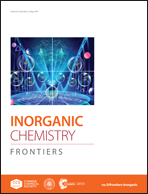Natural chalcopyrite as a sulfur source and its electrochemical performance for lithium–sulfur batteries†
Abstract
The production of polysulfides during discharging and their solubility in electrolytes are issues encountered in lithium–sulfur batteries. In this study, a novel chalcopyrite material with fixed sulfur was developed based on its chemical affinity for lithium–sulfur batteries. Pure micro-sized chalcopyrite (CuFeS2) was prepared from its natural ore by simple flotation. Sulfur in the prepared chalcopyrite can be fixed in the electrode during charging–discharging because copper and iron are sulfur-friendly elements in nature. The fixing of sulfur leads to a high initial charge capacity (1300 mA h g−1 at the initial discharge current density of 100 mA g−1), excellent rate performance, and good cycling properties. The discharge capacities are approximately 1200, 1050, 970, 930, and 875 mA h g−1 at current densities of 100, 200, 300, 500, and 1000 mA g−1, respectively. When the current density is reduced to 100 mA g−1, the reversible capacity can recover to 1000 mA h g−1, and the cyclability becomes impressive (initial capacity of 1130 mA h g−1, and 767 mA h g−1 is maintained for 100 cycles at a high current density of 1000 mA g−1). Given the abundance of chalcopyrite in nature and the simplicity and low cost of flotation extraction, chalcopyrite exhibits potential to be applied to lithium–sulfur batteries.



 Please wait while we load your content...
Please wait while we load your content...